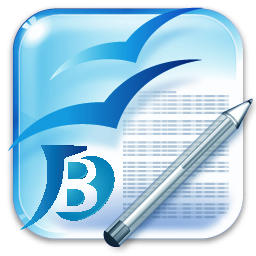Blended-problem based learning: critical thinking skills and information literacy in cell learning
Abstract
Keywords
Full Text:
PDFReferences
American Association of School Librarians, & Association for Educational Communications and Technology. (1998). Information literacy standards for student learning: Standards and indicators. Retrieved from https://www.ala.org/ala/aasl/aaslproftools/informationpower/InformationLiteracyStandards_final.pdf
Association of College and Research Libraries. (2000). Information literacy competency standards for higher education. Retrieved from http://www.ala.org/acrl/standards/informationliteracycompetency
Back, D. A., Haberstroh, N., Antolic, A., Sostmann, K., Schmidmaier, G., & Hoff, E. (2014). Blended learning approach improves teaching in a problem-based learning environment in orthopedics - a pilot study. BMC Medical Education, 14(1), 17. https://doi.org/10.1186/1472-6920-14-17
Derby, C., & Williams, F. (2010). The impact of problem based Learning, blended-problem based learning, and traditional lecture on student’s academic achievement in education. In J. Sanchez & K. Zhang (Eds.), E-Learn: World Conference on E-Learning in Corporate, Government, Healthcare, and Higher Education (pp. 50–55). Retrieved from https://www.learntechlib.org/p/35509/
Dogan, N. (2017). Blending problem based learning and history of science approaches to enhance views about scientific inquiry: New wine in an old bottle. Journal of Education and Training Studies, 5(10), 99–112. https://doi.org/10.11114/jets.v5i10.2646
Facione, P. A. (2011). Critical thinking: what it is and why it counts. Retrieved from https://www.student.uwa.edu.au/__data/assets/pdf_file/0003/1922502/Critical-Thinking-What-it-is-and-why-it-counts.pdf Kazu, I. Y., &
Demirkol, M. (2014). Effect of blended learning environment model on high school students’ academic achievement. TOJET: The Turkish Online Journal of Educational Technology, 13(1), 78–87. Retrieved from https://files.
eric.ed.gov/fulltext/EJ1018177.pdf
Khoiriyah, U., Roberts, C., Jorm, C., & Van der Vleuten, C. P. M. (2015). Enhancing students’ learning in problem based learning: validation of a self-assessment scale for active learning and critical thinking. BMC Medical Education, 15(1), 140. https://doi.org/10.1186/s12909-015-0422-2
Kong, S. C. (2014). Developing information literacy and critical thinking skills through domain knowledge learning in digital classrooms: An experience of practicing flipped classroom strategy. Computers & Education, 78, 160–173. https://doi.org/10.1016/j.compedu.2014.05.009 Kwan, L. S. L., &
Yunus, M. M. (2015). Group participation and interaction in ESL wiki collaborative writing among malaysian gifted students. Asian Social Science, 11(2), 59–68. https://doi.org/10.5539/ass.v11n2p59
Leibiger, C. A. (2011). “Google reigns triumphant”?: stemming the tide of googlitis via collaborative, situated information literacy instruction. Journal Behavioral & Social Sciences Librarian, 30(4), 187–222. https://doi.org/10.1080/01639269.2011.628886
Pinheiro, P. A. (2012). Collaborative writing by means of digital tools: resignifying textual production in the school context. International Research Journal of Arts and Social Sciences, 1(1), 8–21. Retrieved from https://www.interesjournals.org/articles/collaborative-writing-by-means-of-digital-tools-resignifying-textual-production-in-the-school-context.pdf
Riadi, E. (2016). Statistika penelitian: Analisis manual dan IBM SPSS. Yogyakarta: Andi offset.
Saliba, R., Mussleman, P., Fernandes, M., & Bendriss, R. (2017). Promoting information literacy of pre-medical students through project-based learning: a pilot study. International Journal of Education and Literacy Studies, 5(4), 1–15. https://doi.org/10.7575/aiac.ijels.v.5n.4p.1
Schiffl, I. (2018). How information literate are junior and senior class biology students? Research in Science Education, 50, 773–789. https://doi.org/10.1007/s11165-018-9710-2
Triyanto, S. A., Prayitno, B. A., & Probosari, R. M. (2014). Penerapan model pembelajaran blended-problem solving melalui aplikasi moodle untuk meningkatkan kemampuan berpikir kritis siswa kelas X-1 SMAN 3 Surakarta tahun pelajaran 2012/2013. BIO-PEDAGOGI: Jurnal Pembelajaran Biologi, 3(1), 99–108. Retrieved from https://jurnal.uns.ac.id/pdg/article/view/5326
Vesisenaho, M., Valtonen, T., Kukkonen, J., Havu-Nuutinen, S., Hartikainen, A., & Karkkainen, S. (2010). Blended learning with everyday technologies to activate students’collaborative learning. Science Education International, 21(4), 272–283. Retrieved from https://files.eric.ed.gov/fulltext/EJ907048.pdf
Wenger, K. (2014). Problem-Based Learning and information literacy: A natural partnership. Pennsylvania Libraries: Research & Practice, 2(2), 142–154. https://doi.org/10.5195/PALRAP.2014.61 Yilmaz, M. B., & Orhan, F. (2010). Pre-serviceenglish teachers in blended learning environment in respect to their learning approaches. TOJET: The Turkish Online Journal of Educational Technology, 9(1), 157–164. Retrieved from https://files.eric.ed.gov/fulltext/EJ875779.pdf
Zurkowski, P. G. (1974). The information service environment relationships and priorities. Related paper no. 5. Retrieved from https://eric.ed.gov/?id=ED100391
DOI: http://dx.doi.org/10.26555/bioedukatika.v8i2.14315
Refbacks
- There are currently no refbacks.

This work is licensed under a Creative Commons Attribution-ShareAlike 4.0 International License.
JURNAL BIOEDUKATIKA
ISSN 2338-6630 (Print) | ISSN 2541-5646 (Online)
Organized by Department of Biology Education
Published by Universitas Ahmad Dahlan
Jl.Ringroad Selatan, dk Kragilan, Tamanan, Banguntapan, Bantul, Daerah Istimewa Yogyakarta, Indonesia







